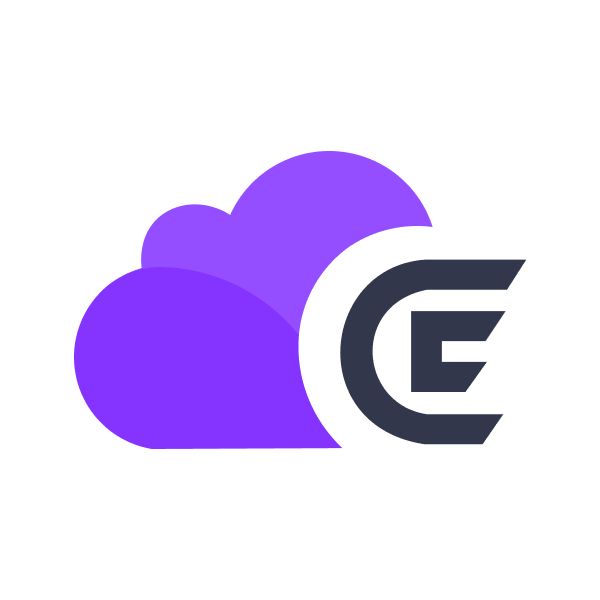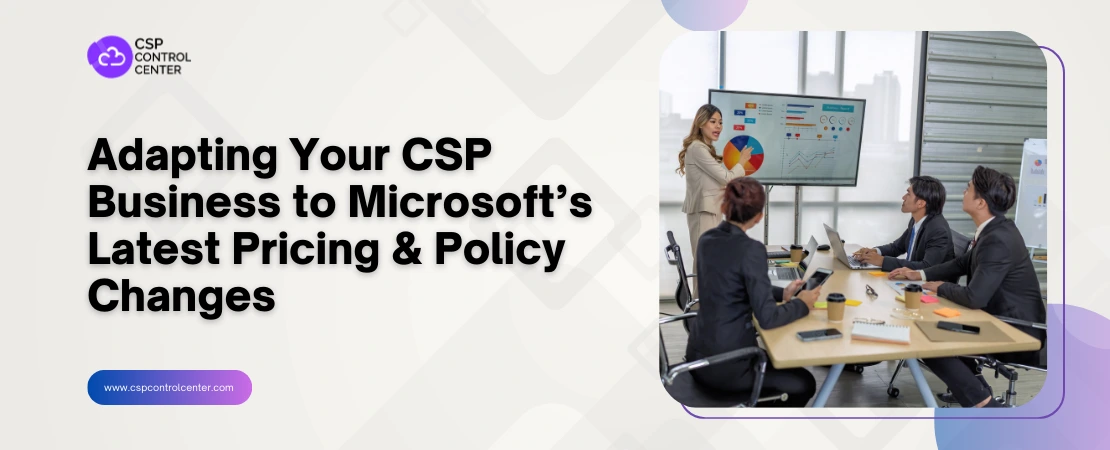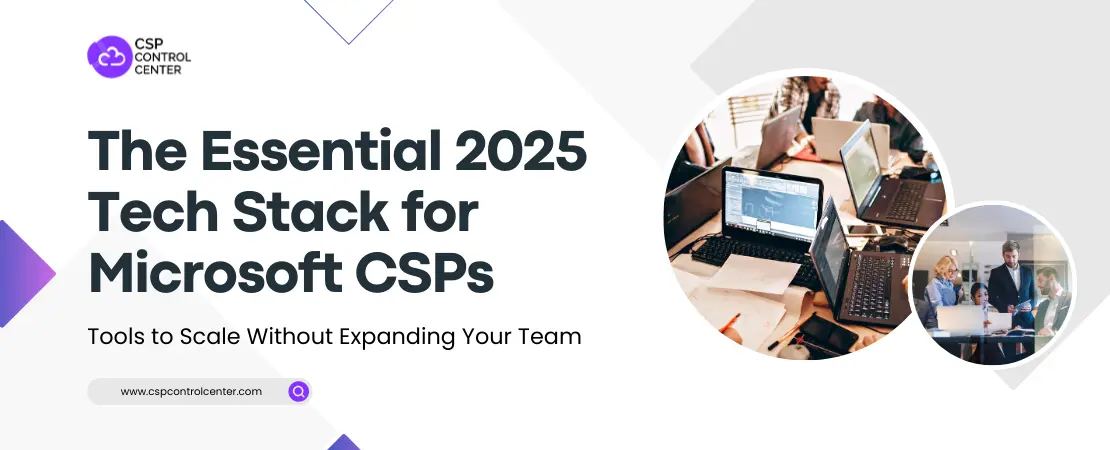Microsoft Cloud Solution Provider (CSP) program has transformed how businesses consume cloud services, but it has also introduced a range of billing complexities. With tiered pricing, dynamic discounts, usage-based billing, and complex subscription models, managing invoices accurately and efficiently is a challenging task. According to MGI Research, “30% of companies indicate that billing issues are impacting their financial results.” Manual billing processes simply can’t keep pace with the volume and complexity of modern cloud transactions. This makes billing automation essential and not just good to have. If you, as a Microsoft CSP, fail to automate this critical process, you might find yourself struggling with administrative overhead, revenue leakage, compliance risks, and poor customer experience. A robust billing platform is critical to streamline operations, ensure compliance, and maintain customer trust.
As your Microsoft CSP business grows, you need to automate your billing operations and have to decide whether to build your own billing platform tailored to your business or invest in a SaaS-based CSP billing solution. This decision is critical as it can make or break your operational efficiency and profitability.
In this blog, we’ll break down the pros and cons of each approach across cost, time, scalability, and compliance to help you make an informed, strategic choice.
Understanding the CSP Billing Landscape
Before we dive into the build vs. buy comparison, it’s important to understand what makes Microsoft CSP billing so uniquely challenging. As Microsoft CSP, you are responsible for much more than just reselling. You need to take care of everything from pricing and provisioning to customer invoicing and taxation. The following adds to the complexity of Microsoft CSP billing:
- Dynamic Pricing- prices can fluctuate based on usage patterns, customer tier, promotional offers, customer-specific discounts, etc.
- Frequent Product Catalog Changes- Microsoft frequently updates its product catalog, adding new services, retiring others, and modifying pricing structures.
- Subscription Lifecycle Management- Customers upgrade, downgrade, cancel, or pause services mid-cycle.
- Multi-tenant Environments- you might serve multiple customers with varying needs, each requiring separate billing, reporting, and management capabilities.
- Regulatory and Tax Compliance- each country or region may have unique invoicing standards, tax laws, and data retention requirements.
- Limited Visibility into Customer Usage- you may not have granular visibility into how customers are using the services, making it harder to detect underutilized resources, excess usage, or to provide proactive account management.
These challenges make having a robust billing system non-negotiable for Microsoft CSPs.
What a Robust CSP Billing Platform Must Handle
To support the operation, financial, and compliance needs of your Microsoft CSP business, a billing platform must go far beyond basic invoicing. A strong billing platform must handle:
- Accurate usage tracking across services and regions with support for overage detection, thresholds, and custom usage alerts
- Automated invoicing with support for taxation, discounts, custom invoice templates, and credits.
- Subscription lifecycle management with seamless handling of mid-cycle upgrades and downgrades, pauses and cancellations, renewals, etc. It should also provide visibility into subscription history and changes.
- Multi-currency and multi-country billing support with currency conversion and exchange rate updates and localized tax handling to ensure accurate, compliant invoicing.
- Reconciliation with Microsoft Partner Center to ensure billing accuracy, identify mismatches or missing charges, and prevent revenue leakages.
- Compliance and Security beyond tax compliance by maintaining detailed audit logs for all billing changes. It should also comply with data privacy standards like GDPR, SOC 2, and ISO 27001.
Read our blog, Top 9 features to look for in your Microsoft CSP billing tool to learn more.
The “Build” Approach: Developing Your Own CSP Billing
Platform
Building your own CSP billing platform from scratch gives you total control but comes with significant challenges. Let’s break down the pros and cons.
Pros of Building Your Own CSP Billing Platform
Building your own CSP billing platform offers several advantages if you have the right resources. Here are the benefits of building a CSP billing tool on your own-
Customization
You can build a system that is tailored to your exact business needs. It can accommodate unique pricing models, specific cloud offerings, custom discounts, etc. There’s no need to compromise on features or work around limitations imposed by third-party solutions.
Control
When you build your system, you get complete control. You own all data, security implementations, and feature roadmaps. You have control over integration decisions, user experience design, and performance optimization. There is zero dependency on third-party vendors. Your team can prioritize features based on your business needs rather than being constrained by a vendor’s development priorities.
No Vendor Lock-in
You are not dependent on the roadmap, pricing, or policies of a third-party provider. If your business model evolves or market conditions change, you can adapt your platform accordingly without negotiating with external vendors or migrating to new systems.
Strategic Differentiation
A proprietary platform can set you apart in a competitive market. If you offer unique billing processes and customer experience through your custom billing platform, your competitors who are using standard billing platforms will be unable to replicate the same.
Cons of Building Your Own CSP Billing Platform
Building a custom CSP billing platform might offer several benefits, but at the same time, it has some disadvantages that may outweigh the advantages. Here are some of the cons that might hold you back from building a custom billing platform-
High Initial Costs
The most immediate challenge you will face when building a CSP billing platform is the high initial investment. You will need to hire a development team, including senior engineers, quality assurance specialists, and DevOps professionals. You will also incur costs on infrastructure like servers, databases, API development, and security implementations. The more complex your billing requirements, the higher this cost will be.
Ongoing Maintenance
Once you build the billing platform and start using it, you will need to keep maintaining it. Your team must handle bug fixes, security updates, and compliance changes. You will have to manage updates, including Microsoft API changes, new SKUs and price lists, and regional tax and compliance changes. Additionally, as your business grows in volume or you expand geographically, you will need to modify and upgrade your billing platform.
Compliance & Security Risks
CSP billing platforms must comply with GDPR, PCI-DSS, SOC 2, and various regional tax laws. Maintaining compliance requires dedicated legal and security expertise. A single compliance failure can result in significant financial penalties and business disruption. To comply with these, you will need to hire legal, tax, and security experts.
Time to Market
Building a billing platform is a time-consuming project. Developing, testing, and deploying a production-ready billing platform typically requires 12 to 24 months, sometimes longer. This time, you are either dependent on manual billing processes or solutions that are not the best fit. This limits your ability to scale, and you risk losing revenue due to billing errors.
The “Buy” Approach: Using a SaaS CSP Billing Platform
Instead of building from scratch, you can opt for a ready-made SaaS platform tailored to the Microsoft CSP ecosystem. Buying a CSP billing platform is faster and less resource-intensive compared to building one. Let’s examine the benefits and drawbacks.
Pros of Buying a SaaS CSP Billing Platform
Opting for a SaaS CSP billing platform can save time, reduce complexity, and streamline operations. Let us have a look at some of the benefits.
Faster Deployment
One of the immediate benefits you can see when buying a billing platform is fast deployment. Most SaaS platforms are plug-and-play and can be deployed in weeks, not months. These platforms require no coding and can integrate with existing systems, including ERP and CRM.
Lower Upfront Costs
In this model, you do not have to spend on hiring developers and setting up infrastructure. This reduces the upfront costs and makes it accessible even for small and medium businesses. These billing platforms generally offer subscription-based pricing, which makes budgeting easier.
Scalability & Reliability
When you purchase a billing platform from an established vendor, you get a solution that can handle usage spikes, traffic fluctuations, and growth-related challenges. Global compliance requirements are already implemented and maintained by the vendor. Apart from this, Professional support and maintenance are included.
Customization & Flexibility
Many solutions come pre-configured for CSP business models with specific Microsoft integrations. While customization options may be limited compared to building from scratch, they’re often sufficient for most business requirements and continue evolving based on customer feedback.
Expertise and Best Practices
These billing platforms are built by specialists who understand billing complexities across multiple industries and use cases. Continuous updates ensure that you get support for new Microsoft services and SKUs, updated API integrations, and Security patches and platform enhancements with no extra effort from your side.
Cons of Buying a SaaS CSP Billing Platform
While buying a SaaS CSP billing platform offers convenience, there are some limitations as well. Here are some potential drawbacks-
Less Customization
Limited customization means that the platform may not perfectly fit unique business models or specific customer requirements. Also, you will be dependent on the vendor’s roadmap for new features, which may not align with your business priorities or timeline.
Vendor Dependency
You rely on the third-party provider’s availability, performance, and business stability. Data portability can become a concern if you need to migrate to a different solution. You have limited control over system changes, upgrades, or performance.
Recurring Costs
Buying saves you the initial setup and development cost, but the recurring costs can accumulate over time. Monthly or annual subscription fees, combined with transaction-based pricing, can become expensive as your business scales. Moreover, vendors may increase prices over time, leading to higher monthly costs.
Integration Challenges
While most SaaS platforms offer APIs and standard integrations, unique requirements may require significant customization work. Without proper integration you have a risk of data silos.
Comparison: Build vs Buy
| S.no | Criteria | Build | Buy |
| 1 | Initial Cost | High | Low |
| 2 | Time to Deploy | 12–24 months | Days to Weeks |
| 3 | Customization | Fully customizable | Moderate customization |
| 4 | Maintenance | Handled in-house | Managed by vendor |
| 5 | Scalability | Depends on the architecture and resources | Vendor-managed automatic scaling |
| 6 | Compliance | Self-managed | Shared or vendor-handled |
| 7 | Vendor Risk | None | Moderate |
When Building Makes Sense
Building a custom CSP billing platform makes sense in specific scenarios where the benefits outweigh the substantial costs and risks. Build makes the most sense if:
You have a large in-house engineering team with billing domain expertise
If you already have an engineering team that includes developers, DevOps engineers, and solution architects who understand subscription billing, Microsoft APIs, and tax logic, building a CSP billing platform is feasible.
You want complete control over the roadmap, data access, and platform architecture.
Complete control is important if your business model requires unique billing flows, custom integrations, or future capabilities that off-the-shelf platforms don’t currently support. Moreover, full ownership of your platform gives you unrestricted access to billing data on how it’s stored, secured, processed, and reported. This is important in industries like finance, healthcare, or government, where data residency, encryption, and audit trails are legal requirements.
Your compliance and legal teams are already operational
If you already manage compliance in-house and track changes in GDPR, PCI-DSS, and regional tax regulations, and have the necessary expertise and processes, you are in a good position to build your own CSP billing platform.
When Buying Makes Sense
If you are in your growth phase or have limited internal resources, then buying a SaaS-based billing solution makes sense. You can benefit from quick deployment capabilities that allow you to focus on customer acquisition and revenue growth. Buying is the right choice when-
You are a startup or SMB that needs to get to market quickly
The faster you can start selling, invoicing, and generating revenue, the better your chances of capturing market share and achieving growth targets. By buying a ready-made SaaS billing solution, you can be operational within days or weeks, not months or quarters.
You don’t have technical or billing expertise in-house
If your internal team doesn’t include billing domain experts, DevOps engineers, or compliance specialists, trying to build a custom platform can quickly become overwhelming and risky. SaaS billing platforms are built by domain experts who have already built as per Microsoft’s policies, tax jurisdictions, currency conversion, and compliance needs.
You prioritize agility over customization.
If you prioritize agility over customization, you will find SaaS solutions more aligned with your business needs. While these platforms may not offer 100% custom logic for every edge case, they typically cover the vast majority of CSP billing scenarios.
You need predictable costs and faster compliance.
Most CSP billing platforms have transparent and recurring pricing. This makes it easier to forecast expenses and manage cash flow. Many include built-in compliance with tax and privacy laws, which lower legal and operational risks.
You want access to continuous innovation and support
Most vendors regularly release new features, improve integrations, and respond to changes in the Microsoft ecosystem. In addition, you gain access to professional support teams who understand the nuances of CSP billing.
Decision Framework and Evaluation Criteria
Deciding between building and buying needs careful evaluation from different angles. Asking yourself the following question can help you reach a decision.
- How soon do we need to start billing?
If the answer is “within the next quarter,” buying is the better option.
- Do we have billing domain knowledge?
If not, then the risk of errors and delays is high, and you should consider buying.
- What’s our compliance risk tolerance?
If you are prepared to take full responsibility for regulatory compliance, then you can build a custom billing solution.
- How unique are our billing requirements?
If your needs are 90% covered by existing SaaS tools, customization isn’t worth the investment.
- What’s our budget now and in the future?
Building comes with high upfront costs and ongoing maintenance. If you’re looking for lower initial investment and predictable monthly expenses, you should consider buying.
The decision between building and buying a CSP billing platform is about finding the right answer for your specific business needs. Building offers unmatched customization and control but demands significant time, cost, and expertise. Buying a SaaS solution delivers speed, scalability, and compliance with lower upfront costs, but comes with limited flexibility and increased vendor dependency. Take time to evaluate both options thoroughly, consult with stakeholders across your organization, and choose the approach that best supports your long-term success.
Ready to Simplify Your Microsoft CSP Billing?
Don’t let billing complexities slow down your Microsoft CSP business. With CSP Control Center (C3), you can streamline invoicing, automate subscription management, and ensure compliance with a powerful billing platform built for CSPs. Whether you are a Direct or Indirect CSP, C3 gives you powerful features like usage tracking, Partner Center integration, automated reconciliation, and support for multi-country, multi-currency billing. C3 grows with your business; no more manual spreadsheets, missed charges, or late invoices. With C3 you get-
- Fast deployment
- Lower upfront costs
- Expert support when you need it
- Built-in compliance with global tax and privacy laws
- Real-time usage tracking and automated invoicing
- Continuous updates to match Microsoft’s evolving ecosystem
Book a free demo today and start focusing on growth while we take care of the billing complexity.

 CSP Control Center
CSP Control Center
 CloudEvents
CloudEvents


